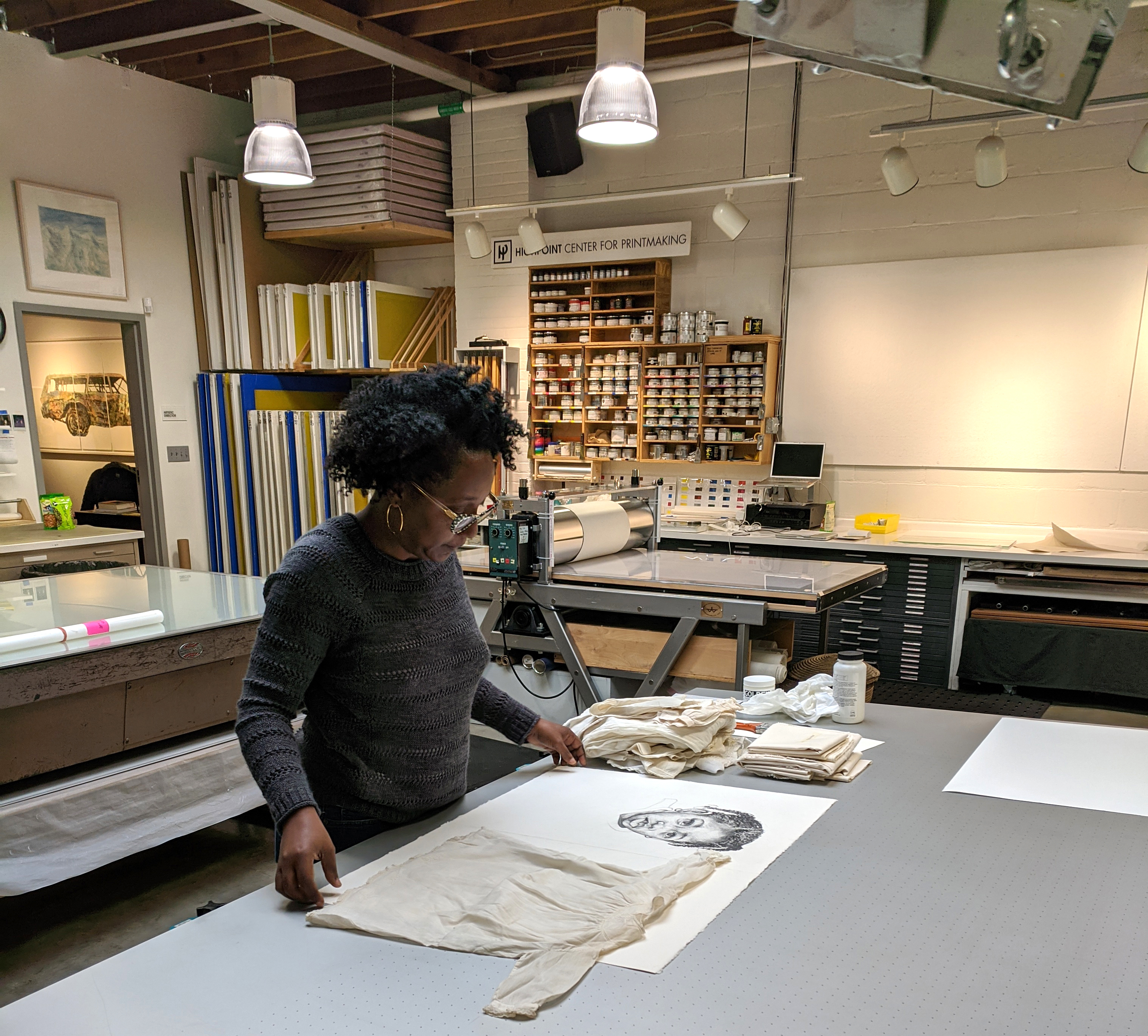Born 1972, Conroe, Texas
Delita Martin was the youngest of nine children in an uncommonly creative family. Growing up, she found that making things was as natural as “drinking a glass of water,” she has said. “You just did it.”1 She was surrounded by storytellers, writers, poets, and, not least, quilters. From age five, she was introduced by her mother as “the artist.” Her father was an oil painter and furniture maker who supported the family as a master plumber. He had studied with the influential painter John T. Biggers (1924–2001) at what is now Texas Southern University in Houston. When Martin was around twelve, her father told her to gather her drawings: he was taking her to meet Biggers and show him her work. Fulfilling a childhood resolve, she attended Texas Southern, earning a BFA in drawing (2002). She graduated with an MFA in printmaking (2009) from Purdue University, West Lafayette, Indiana.
Every day, Martin measures the work she does in her studio against the words Biggers said to her: “Don’t ever miss an opportunity to uplift your people through your work.”2 She describes her art as “a reconstruction of identities, offering different and more positive images of African American women.”3 Her models are frequently family members or people whose spirits she is drawn to. Primarily a printmaker, she frequently includes a relief process in her many-layered works. The Minneapolis Institute of Art’s The Soaring Hour (Self-Portrait) (2018), for example, involves , charcoal, acrylic, colored pencil, decorative paper, and hand stitching. The latter is a reference to Martin’s grandmother, Texana Williams. As a child, Martin spent evenings helping her make quilts; it was her job to cut the fabric and tack it into place. “It was in these skillfully stitched pieces of old school clothes, baby blankets, work shirts, and torn jeans,” she wrote, that her grandmother pieced together Martin’s history.4 Now Martin adds hand stitching to nearly every work, always using the loop stitch her grandmother taught her.
After eight years in Little Rock, Arkansas, where she taught in the fine arts department at the University of Arkansas (2008–12), Martin and her family moved back to the Houston area, closer to her extended family. Her one-person shows include “Delita Martin: Calling Down the Spirits” (2020), National Museum of Women in the Arts, Washington, D.C.; “Night Women” (2017), Bradbury Art Museum, Arkansas State University, Jonesboro, and other venues; “I Come from Women Who Could Fly” (2017), Ohr-O’Keefe Museum of Art, Biloxi, Mississippi; and “Beyond Layers” (2014–15), South Dallas Cultural Center and other venues. She has participated in “State of the Art: Discovering American Art Now” (2014), organized by Crystal Bridges Museum of American Art, Bentonville, Arkansas; “The Roux” (2011), Houston Museum of African American Culture; “Houston Collects” (2008), Museum of Fine Arts, Houston; and other exhibitions.
—Marla J. Kinney
Notes
“Delita Martin: The Role of Family + Storytelling,” State of the Art: Discovering American Art Now, Crystal Bridges Museum of American Art, video, 27:39, posted December 11, 2014, https://www.youtube.com/watch?v=XuOPXVYE6pw&t=352s. ↩︎
“Artist’s Talk with Delita Martin: Between Spirits and Sisters,” Galerie Myrtis, Baltimore, Maryland, video, 1:11:41, posted March 26, 2019, http://galeriemyrtis.net/delita-martin-video/. ↩︎
Delita Martin, email communications with the author, March and May 2020. ↩︎
I Come from Women Who Could Fly: New Work from Delita Martin (exh. cat.), Art & Science Center for Southeast Arkansas, Pine Bluff, 2014. ↩︎
